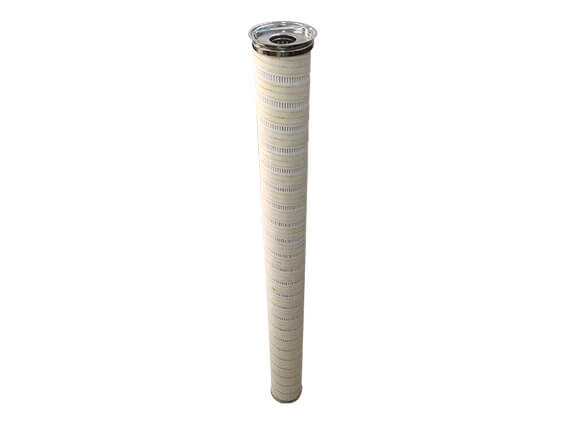Coalescing Systems
Liquid to Liquid

Liquid-liquid coalescers are devices used in the process of separating immiscible liquids, such as oil and water, by promoting the coalescence (merging) of the dispersed phase droplets into larger droplets, which can then be easily separated. Coalescing systems are commonly used in various industries, including oil and gas, petrochemical, chemical, and wastewater treatment.
The coalescing process typically involves passing the mixture of liquids through a vessel or coalescer cartridge, which contains a media with specific properties designed to facilitate the coalescence. The media can be composed of different materials, such as fibrous materials, meshes, or porous materials, which provide a large surface area and promote the agglomeration of the dispersed droplets.
The coalescence mechanism involves several steps, including capturing the droplets on the media surface, promoting collision between droplets, coalescence of the captured droplets to form larger droplets, and the continuous removal of the coalesced droplets from the coalescer system.
Coalescing systems play a critical role in various processes, such as removing oil from water in oil water separators, treating produced water in the oil and gas industry, and purifying liquids in chemical processes. They help improve the efficiency of separation processes and reduce the environmental impact by effectively removing contaminants from the liquid streams.
Coalescing systems are crucial in a wide range of industries where the separation of immiscible liquids is required. One common application is in the oil and gas industry, where the separation of oil and water is necessary for efficient processing and environmental protection. Coalescing systems are also utilized in chemical processing, wastewater treatment, and various other sectors.
The primary objective of a coalescing system is to promote the coalescence of dispersed phase droplets into larger droplets, making it easier to separate them from the continuous phase. This coalescence step is commonly achieved by passing the liquid mixture through a vessel or coalescer cartridge, which contains a media specifically designed to enhance the coalescing process.
The media utilized in coalescers can be composed of various materials depending on the application’s requirements. Fibrous materials, such as fiberglass, cellulose, or synthetic polymers, are often used due to their high surface area and ability to capture and retain liquid droplets. Meshes or porous materials can also be employed to promote coalescence by enabling droplet collision and agglomeration.
The coalescing process typically occurs in several stages. As the liquid mixture flows through the coalescer, the dispersed droplets come into contact with the media’s surface. The media effectively captures the droplets and provides a platform for their interaction. As droplets accumulate on the media, they come into closer contact, increasing the probability of collision.
When a collision occurs, the energy generated causes the droplets to merge, forming larger droplets. This coalescence process continues as the liquid mixture passes through the coalescer. Over time, the larger droplets grow and eventually separate from the continuous phase.
To ensure effective separation, coalescing systems may incorporate additional components. For instance, a liquid-liquid separator may include settlement chambers or baffles to enhance the settling of coalesced droplets. These components help facilitate the gravity-driven separation of the larger droplets from the liquid mixture.
Coalescing systems offer several benefits in liquid-liquid separation processes. By decreasing droplet size and increasing droplet size distribution, they enhance the efficiency of subsequent separation steps. This leads to improved product quality, reduced losses, and enhanced process performance. Additionally, coalescing systems play a crucial role in environmental protection by minimizing the discharge of liquid contaminants into the environment.
It’s essential to consider various factors when selecting a coalescing system, including the properties of the liquids to be separated, desired separation efficiency, flow rates, and operating conditions. Coalescer design, media selection, and system configuration should be tailored to the specific requirements of the application to achieve optimal separation performance.
